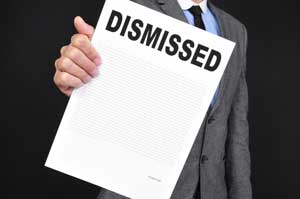
What Happens After a Motion to Dismiss is Granted?
A motion to dismiss is filed when one party asserts that their case should not proceed to trial. It can be an effective tool for defendants.
In certain circumstances, such as federal securities fraud suits, discovery is automatically stayed pending a decision on the motion to dismiss.
What happens after a motion to dismiss is granted?
A motion to dismiss is a legal request that the court dismiss your lawsuit without giving you the chance for discovery or trial. It usually includes an outline of law (known as a “brief”) outlining the defendant’s arguments for dismissing your suit.
You must respond to this motion by filing a memorandum of your own law, known as an opposition. Typically, this takes two or three weeks but you have the option to request more time from the judge if needed.
The court must also send you a decision indicating whether it will grant your motion to dismiss with prejudice or not. This decision is essential as you have the right to appeal from it.
Prison officials can make a variety of arguments in their motion to dismiss your case, such as that you filed in the wrong court or didn’t properly serve your papers on them. It is important that you take these allegations seriously and defend them vigorously if possible; otherwise, their decisions could significantly damage your chances for success in court.
What happens after a motion to dismiss is denied?
A motion to dismiss (also referred to as a demurrer in some states) is an essential tool for defendants that can prevent lawsuits from starting. Unfortunately, it can also be an intricate and confusing process for plaintiffs.
In most cases, a motion to dismiss is based on what you claim in your complaint and not documents or other evidence from the defendants. This means that in order for relief to be granted, your complaint must state an actual claim.
If the court denies your motion to dismiss, you may still have the option to amend your complaint by filing for Leave to Amend. This will give the judge the chance to address any issues they find in your case and allow for resolution of those problems.
What happens after a motion to dismiss is denied with prejudice?
A motion to dismiss is an effective tool in civil litigation, having the potential to end a case before trial begins. However, there are certain rules and standards associated with these motions that you should be aware of.
In a lawsuit, the plaintiff (the person filing the lawsuit) must state a claim upon which relief can be granted. If the plaintiff’s complaint fails to contain enough facts, however, the defendant can file for dismissal.
When the court denies a motion to dismiss, it means the case will proceed. Typically, they assume all allegations in the complaint are true and then evaluate whether there is sufficient legal basis to pursue action against the defendant.
A defendant may file a motion to dismiss if their lawsuit was filed in the wrong court or jurisdiction. Additionally, it can be dismissed if no administrative remedies have been exhausted by the plaintiff.
What happens after a motion to dismiss is denied with prejudice with leave to amend?
Once a court dismisses your complaint with prejudice and denies leave to amend, the case is closed and any claims filed after that period have been exhausted will be dismissed again.
Recently, the Fourth Circuit addressed this issue in Britt v. DeJoy en banc, holding that when a district court dismisses a complaint or action without prejudice but does not grant leave to amend, the judgment becomes “final” and appealable under 28 U.S.C. SS 1291.
This decision is beneficial. It reduces the uncertainty caused by case-by-case determinations of finality and provides guidance on how plaintiffs must appeal such a dismissal.
No matter the outcome of the Fourth Circuit case, litigants should remain mindful of this new rule. When the district court believes an amendment can cure a pleading shortcoming, it should state so and grant leave to amend. Conversely, when it does not grant leave to amend, it should issue a separate order of dismissal intended as a final judgment in accordance with Federal Rule of Civil Procedure 58.
